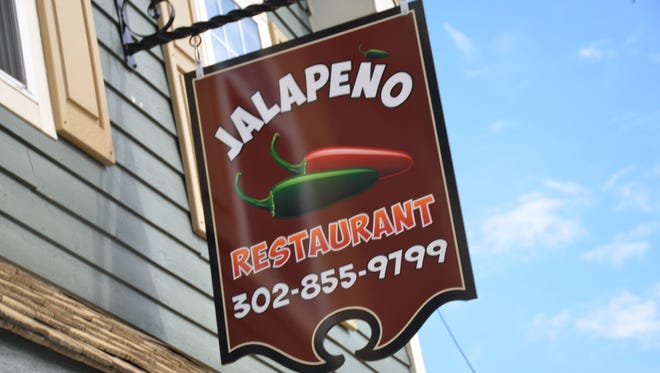Latino culture, cuisine blossoming in Georgetown

Georgetown, the Sussex County seat, has for years had a majority-minority population.
While that trend has continued and solidified, it also has been a significant factor in Georgetown's ongoing growth.
Indeed, population increases in Georgetown in recent years have largely been the result of a continuing influx of Hispanics. And those increases have helped offset an earlier trend of declining population, tepid home sales and a stagnant local economy.
And, as Georgetown's population has continued to grow — up nearly 40 percent in 10 years — the majority of that growth has been Hispanic. In fact, the town is now nearly 48 percent Latino, up 16 points since 2000.
Georgetown's current population is about 6,500, with 36.6 percent white and nearly 15 percent black.
Though some in town have been concerned by the continued arrival of immigrants from Central America, the fact is, they are coming to Delaware because they have jobs at one of the poultry processing or food preparation plants in the Georgetown area.
And these new arrivals with an assured income — sometimes single men but also including families — need places to stay, food to eat, clothes to wear, hopefully attainable within walking distance of the town's residential neighborhoods for those without transportation.
And those needs have fueled perhaps the most impressive economic change in Georgetown, which has been the proliferation of small businesses that cater to a Hispanic, predominantly Guatemalan, clientele.
"We are definitely filling a need," said Victor Paxtor, co-owner of the popular Jalapeno Restaurant on East Market Street.
Paxtor's arrival in Georgetown 25 years ago was typical of the path followed by many immigrants.

Though born and raised in Guatemala, political unrest and the accompanying turmoil led him to flee the country, eventually sneaking into the states illegally. After a fashion, he ended up in Georgetown, landing a job at the Allen Harim poultry processing plant in Harbeson.
After three years of back-breaking work in Harbeson, he moved on to construction.
Meanwhile, in 2012 his brother bought a deli in Georgetown and Victor, by then a legal, naturalized citizen, was brought in to help an ailing business.
Eventually, they decided to convert it to a restaurant serving the cuisine of Central America. And they named it Jalapeno.
"We had in mind that we wanted to serve the Latin community," he said. "And we wanted to serve authentic food."
When Jalapeno opened in 2012, it was an instant success with Georgetown's Hispanic community.
But it also has been discovered by a wider audience.
"This was the best Mexican food I have ever had and we've eaten a lot of Mexican food," said "Victoria K." in a review on Yelp.
The menu is an eclectic blend of Central American cuisines, including pupusas from El Salvador and a variety of typical Mexican offerings, including chimichanga, burrito, quesadilla, enchilada and some unusual dishes like guisado de pollo, which is a flavorful chicken stew.
On weekends, Paxtor and his staff prepare several varieties of caldos — a soup/broth that is traditional to Guatemala and other Central American countries. The broth can be ordered with seafood, chicken, beef or cow's feet.
One recent Sunday, the restaurant was filled with families and single men, all eating some form of broth. Several diners looked like they may have come from church.
The broth is apparently a tradition in Central America.
"It's very much like the foods their families served them back home," said Paco Hernandez, a Mexican native who now works for a job recruiting firm in Georgetown.
Even though Jalapeno is in the shadow of the Sussex County courthouse and an array of government office buildings, it is not the only Hispanic owned business in the heart of Georgetown. A few storefronts away, the Chilmole restaurant opened recently and further east on Market Street a new market offers a selection of Latino foods.
Not far from Market Street, one of the oldest Hispanic markets in the community — El Mercado — offers an array of fresh produce, seafood and meat, along with spices and other foods that are typically found in Central America.

El Mercado also supplies specialty foods to SoDel Concepts' Papa Grande restaurants in Rehoboth Beach and Fenwick Island.
A little further away, there are more restaurants and markets and businesses that sell clothing, boots, electronics and even passport photos. Also popular: businesses that can wire money to family still living in Guatemala or other countries.
"It reminds me of shops back home," said Carlos Ruiz, who came from Guatemala five years ago to work at the Perdue poultry plant.
Though Spanish is the spoken language, most shops seem to welcome non-Hispanic customers. And some think that is a good thing.
"It is good for the economy as a whole," said Chip Guy, Sussex County spokesman. "It has made our local economy more textured and diverse, it has brought about opportunity, and it has exposed the consumer base to new flavors, products, and services."
raetyson@gmail.com